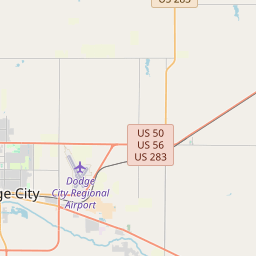Carnegie Library Building
Historical marker location:






1881: Andrew Carnegie, a Scottish-American industrialist and philanthropist, begins his philanthropic efforts in library construction by donating funds to build the Braddock Library in Pennsylvania.
1883: The first "Carnegie Library" is officially established in Dunfermline, Scotland, Carnegie's birthplace. This library serves as a model for future Carnegie Libraries.
1886: Carnegie writes an article titled "Wealth," where he articulates his belief in philanthropy and the responsibility of the wealthy to give back to society.
1889: The Carnegie Corporation of New York is established with the aim of funding the construction of libraries across the United States and other English-speaking countries.
1893: The first Carnegie Library in the United States, the Carnegie Library of Braddock in Pennsylvania, is opened to the public.
Late 1890s to early 1900s: The construction of Carnegie Libraries spreads rapidly throughout the United States and other parts of the English-speaking world, including Canada, the United Kingdom, Australia, and New Zealand. The libraries are often designed by prominent architects and feature diverse architectural styles.
1901: The Carnegie Corporation of New York is founded as a philanthropic organization to manage and administer Andrew Carnegie's charitable projects, including the library program.
1902: Carnegie makes a significant endowment, donating $10 million to establish the Carnegie Institute in Pittsburgh, Pennsylvania. The Institute includes a library, an art gallery, and a natural history museum.
1917: Andrew Carnegie dies, leaving a lasting legacy of philanthropy, including the establishment of thousands of libraries around the world.
1920s-1930s: The construction of Carnegie Libraries gradually slows down, and the focus shifts to maintaining and updating existing libraries to meet changing community needs.
Late 20th century to present: Many Carnegie Libraries undergo renovations, expansions, or repurposing to adapt to modern library services and technological advancements. Some continue to operate as public libraries, while others have been transformed into cultural centers, museums, community spaces, or educational institutions.
The Carnegie Libraries have left an indelible mark on the accessibility of knowledge and education. They remain a testament to Andrew Carnegie's belief in the power of libraries to uplift communities and provide opportunities for personal and intellectual growth.
The first woman mayor in the United States, Susanna Salter, was elected in Argonia, Kansas in 1887.
The county's development was greatly influenced by the expansion of the railroad in the late 19th century. The Atchison, Topeka and Santa Fe Railway played a significant role in shaping Ford County's economy and attracting new residents. The introduction of rail transportation brought increased opportunities for trade and commerce, leading to the establishment of towns such as Dodge City.
Dodge City, the county seat and largest city in Ford County, quickly became a center for cattle trading and ranching. During the late 1800s, the city gained fame as a wild and lawless frontier town, known for its numerous saloons, brothels, and notorious outlaws. However, efforts were made to civilize the town, and by the early 20th century, Dodge City had transitioned into a more orderly and prosperous community.
In more recent years, Ford County has experienced growth and diversification in its economy. Agriculture remains an essential component, with crops such as wheat, corn, and sorghum being major contributors. Additionally, the county has seen the development of manufacturing industries, including food processing and automobile parts production. Ford County continues to be a vibrant and dynamic community, preserving its rich history while embracing the opportunities of the present.
Ford County Timeline
This timeline provides a concise overview of the key events in the history of Ford County, Kansas.
- 1855 - Ford County is officially established as a county in the Kansas Territory.
- 1873 - Dodge City is founded as the county seat of Ford County.
- 1875 - The "Dodge City War" erupts, a conflict between lawmen and saloon owners.
- 1878 - The Atchison, Topeka and Santa Fe Railway reaches Dodge City, boosting the town's growth.
- 1882 - The first cattle shipment from Dodge City's stockyards is sent to Eastern markets.
- 1884 - Dodge City becomes known as the "Wickedest Little City in America" due to its wild and lawless reputation.
- 1910 - The population of Dodge City reaches its peak at around 4,000 residents.
- 1925 - The Boot Hill Museum is founded in Dodge City to preserve the town's Wild West history.
- 1942 - The United States Army establishes the Dodge City Army Airfield during World War II.
- 1951 - The Dodge City Airport is constructed.
- 1963 - The Longhorn Building, a historic hotel in Dodge City, is added to the National Register of Historic Places.
- 1983 - The Boot Hill Casino & Resort opens in Dodge City.